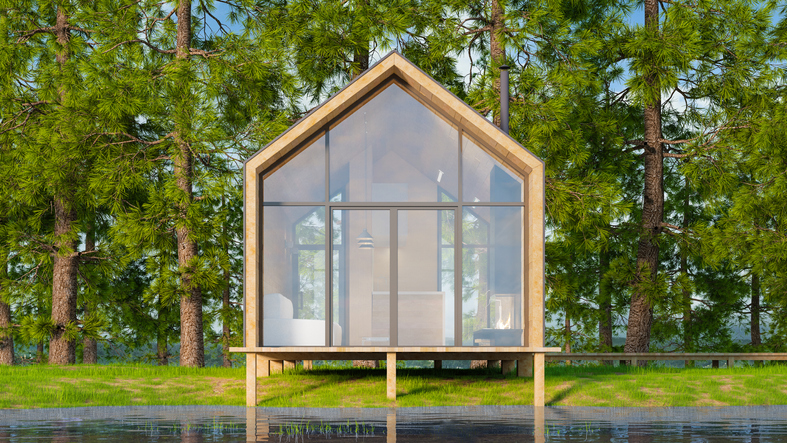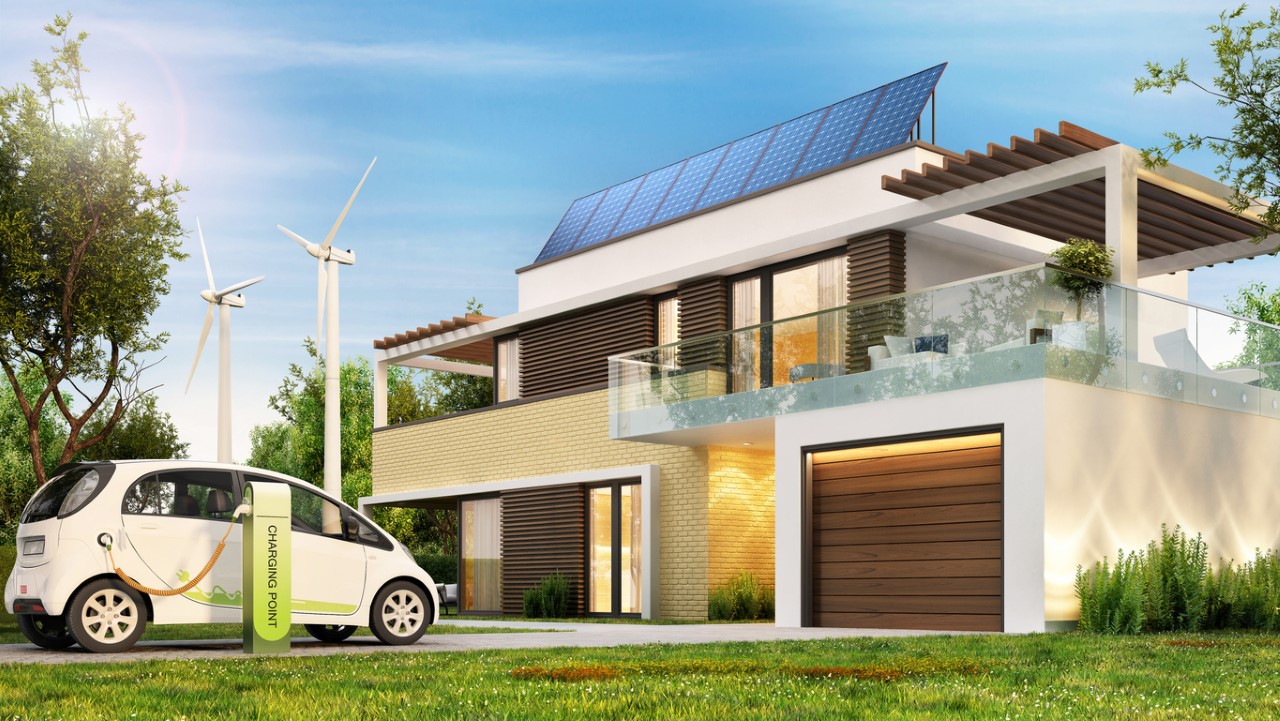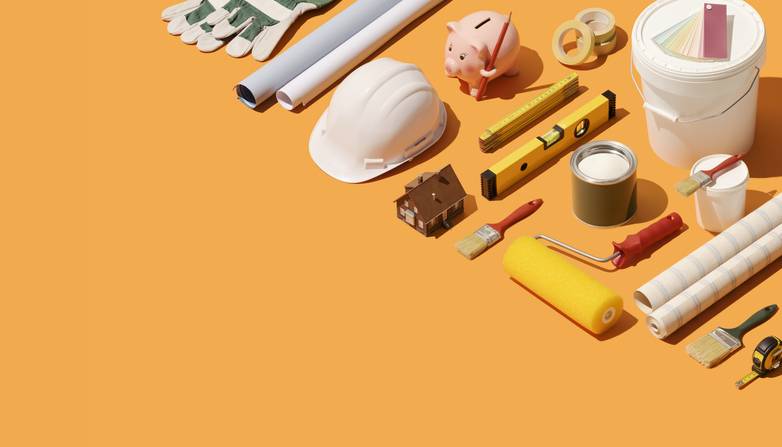Whether you’re looking to downsize, or you have an itch to travel the country, a tiny house can be an excellent solution for you. These small homes are compact in size, energy-efficient, and easy to transport practically anywhere. Before you decide whether a tiny house is right for you, read on to learn more about tiny homes’ characteristics and the many benefits this lifestyle provides.
What is a tiny house?
Unlike a standard “stick-built” traditional home, a tiny house is much smaller in size and typically sits on wheels instead of a foundation so it can be towed and moved. A typical tiny home is just a few hundred square feet or less, while a standard home is much larger, ranging anywhere between 900 and 2,000 square feet or more.
The tiny house trend is on the rise, with more people than ever looking for ways to save money, downsize, and live in a more eco-friendly way. Tiny homes use approximately 7% of the energy that traditional homes do, according to ipropertymanagement.
Tiny homes are ideal for couples, but they can also accommodate small families, too. This small house uses less energy and water, but most are also packed with unique storage features to help people maximize their available space. Most tiny homes can be transported by truck, which means you can move almost anywhere as long as you’re allowed to park your home there. You can also choose to build a tiny house on a foundation as long as you own the land it sits on. There are several types of tiny homes, but all of them have one thing in common: their small size. Whether you want a log cabin or a mid-century modern tiny home, you can find the style that’s right for you.
What do people like about tiny houses?
There are lots of reasons why people choose to live the tiny house lifestyle. Many homeowners prefer the idea of living without so much “stuff” around them, while others enjoy the freedom of mobility this lifestyle provides. Energy savings and lower monthly housing costs are other reasons people seek out a tiny home. Buying a tiny house costs much less upfront, with the average price for a tiny home ranging between $30,000 and $60,000. If you’re interested, there are tiny houses for sale that you can check out. A traditional home will typically cost buyers several hundred thousand dollars. With this in mind, it’s easy to see why the tiny house movement is going strong.
There are many innovative options for tiny houses, such as modular homes and tiny houses on wheels. One that has been gaining attention is the Tesla tiny house. Designed to be eco-friendly and energy-efficient, the Tesla house comes equipped with solar panels and a Powerwall, allowing you to generate and store your own electricity. It helps to reduce your carbon footprint and cut down on utility costs. The compact, minimalist design encourages a simpler lifestyle. Plus, the mobility of tiny houses means you can take your home on the road, exploring new places without leaving your comfort zone behind. Adopting the tiny house lifestyle, especially with sustainable options like Tesla’s, is great for those looking for adventure, simplicity, and environmental responsibility.
The benefits of living in a tiny house
There is a myriad of benefits to choosing the tiny house lifestyle, including:
- Your wallet will thank you: Tiny homes are much less expensive than traditional homes. Instead of a 30-year mortgage that includes taxes and insurance, a tiny house can be bought in cash or financed with a much lower monthly payment. This reduces your cost of living expenses so you can spend your money on things like travel and new experiences. Some tiny homeowners report a monthly cost of as low as $600, and that includes rent and utilities. Compared to traditional homeownership, this lifestyle can potentially save you thousands of dollars each month.
- It’s energy-efficient: Since tiny homes are so small, they don’t require nearly as much energy to heat and cool as traditional homes do. Fewer lightbulbs, a smaller water heater, and smaller appliances also contribute to a tiny home’s efficient operation. You can also power a tiny house using fuel, solar panels, or external generators to keep your energy consumption even lower. That means you’re able to live off the grid, saving you a ton of money on energy costs each month.
- Easier maintenance: If your roof is damaged, it’s much cheaper to get it repaired or replaced on a tiny home. Even something as simple as painting your home is easier and less costly when it’s tiny. Compared to traditional homes, the cost to maintain a tiny home is significantly lower overall. The smaller square footage also means you’ll have a lot less to clean.
- Environmentally friendly: Living in a small house means less energy and water consumption, which is always great for the environment. But there are other reasons why tiny house living is environmentally friendly. The need for fewer materials means less waste and fewer trees that must be cut down to build the home. Some tiny homes are made entirely of reclaimed materials, which is also a much better choice for the environment. A University study found that tiny houses use much less energy to operate and fewer resources to build than traditional homes.
- Simpler lifestyle: If you consider yourself a minimalist, tiny home living is a smart choice. The sheer size of the home is enough to convince most homeowners to downsize and only keep the things they genuinely need. This gives you the freedom to live a much simpler life without the need for so much stuff getting in the way. The more space you have, the more stuff you’ll likely accumulate. Downsizing to a tiny home encourages you to focus your time and energy on other things, like spending time in nature or being with family and friends.
- You can still travel if you want: Unless your tiny home is attached to a foundation, you can take it with you anywhere you go. Just make sure you have a vehicle with a towing capacity that exceeds the weight of your house. Many campgrounds allow tiny homes as long as they meet the maximum requirements for size. If you love to travel, a tiny house can be a perfect way to see the country while enjoying the comforts of home.
Tiny house living
Just because your home is small, it doesn’t mean you can’t enjoy beautiful décor, furniture, and functionality. Here are some tips you can use to ensure you get the most from your tiny home:
- Kitchen and living room: Most tiny homes have an open floor plan with the kitchen and living room in one space. Choose modular furniture that serves more than one function to maximize this space. A table attached to the kitchen wall can be pulled down for additional counter space, mealtimes, playing games, or work. Built-in shelving and a small pantry offer you a place for food and dinnerware. Choose a sleeper sofa that doubles as a comfortable bed in the living room. Storage under the stairway gives you another place to hide throw blankets and other items.
- Bedroom: Many tiny houses have a loft-style bedroom with a low ceiling. A low-profile platform bed works well in this space so that you won’t hit your head on the ceiling. Install some built-in bookcases on the walls for storage and keep your clothing stashed in large plastic bins for easy access. A bed with drawers underneath also offers you a place to store clothes and shoes.
- Bathroom: A vanity with storage under the sink is an ideal choice for tiny home bathrooms. Upper cabinets or a mirrored medicine cabinet is also a great choice to store your medications and toiletries. Make the most of wall space by installing shelving to give you more storage for toilet paper and towels.
- Decoration: You can decorate your tiny home the same way you would a traditional house, but you may need to be a bit more selective. A large mirror is a great option for the living room to make space appear more prominent and bring additional light. Tiny living doesn’t mean you can’t enjoy some trendy décor and accessories. Keep colors light or neutral so that everything looks and feels light, bright, and airy.
Some things to consider if you’re still not sure
If you’re still on the fence about whether or not tiny home living is right for you, there are a few things to consider before you take the plunge:
- If you don’t enjoy small spaces, a tiny home might make you feel closed-in and cramped.
- People with large families or those who plan to start a family might find that tiny homes are just too small for their needs. Those with pets, particularly large dogs, might also find tiny home living challenging.
- If you love to host lots of people for parties and enjoy the company of guests, a tiny house might be challenging to accommodate everyone at once.
- The idea of living in a tiny home is cool, which is always exciting at first. However, you might discover that cramped quarters, very little storage, and tight spaces aren’t exactly right for you.
Ultimately, choosing a tiny home can provide you with a range of benefits, particularly when it comes to the cost. If you enjoy travel, minimalism, and saving energy, a tiny house could be a perfect choice for you. Weigh your options and do some research to learn more about the pros and cons, laws, and regulations of owning a tiny home. You may discover that a tiny house lifestyle is the best one for your needs with the right mindset.




